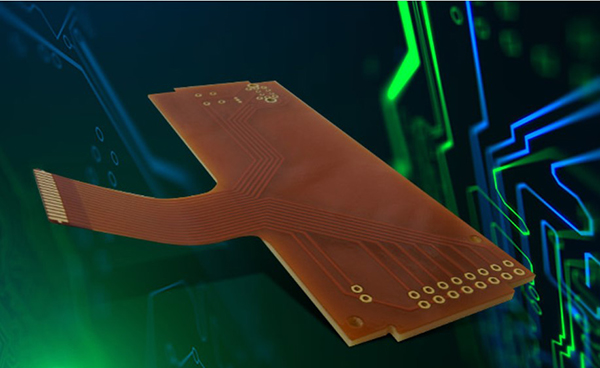Flexible PCB and Flexi-Rigid PCB

Our capability includes single sided, double sided (with or without PTH), multi layer and flexi-rigid. All of our flexi circuits are constructed by building up component layers, eg. base, copper, coverlay, stiffener. Our flexible PCB’s are available at varying delivery times, depending on PCB type. Send your flexi-circuit PCB specifications to us by fax or e-mail for a quotation.
Flexible PCB Materials
Flexible circuits are constructed by building up component layers, eg. base, copper, coverlay, stiffener. Bonding between each component layer is provided by an adhesive layer (epoxy or acrylic).
The materials selected must be appropriate for either static (eg. one time bend into a camera) or dynamic applications (eg. hard disk drive).
If components are to be attached, the base material must be selected to withstand solder temperatures, and a stiffener may be added.
What technology and machinery is used?
A wide variety of specialist process equipment is required to manufacture flexible PCBs. These include laser direct imaging, ink-jet printing, flying probe testing, direct metallisation lines, vacuum lamination presses, small hole drilling machines, and integrated strip-etch-strip lines.
What is the flexible circuit service?
We manufacture and supply flexi-rigid PCBs and flexible circuit boards. We construct flexible circuits by sequential build up of flexible component layers, such as base polyimide, copper, cover-lay, and stiffeners bonded by an adhesive layer (epoxy or acrylic).
Our capability includes single sided, double sided (with or without PTH), multi-layer and flexi-rigid PCBs.
The materials selected must be appropriate for either static (e.g. once only bend into a camera) or dynamic applications (e.g. hard disk drive). Stiffeners are normally applied in the region of the flexible circuit where components are mounted.
Mechanical tooling must be selected according to the volume and accuracy required. Tooling may be either CNC soft tooling (low cost but high unit costs), steel rule (volumes up to a few thousand pieces, medium cost, low dimensional stability), or hard steel punch & die sets (more durable, accurate, & higher cost).